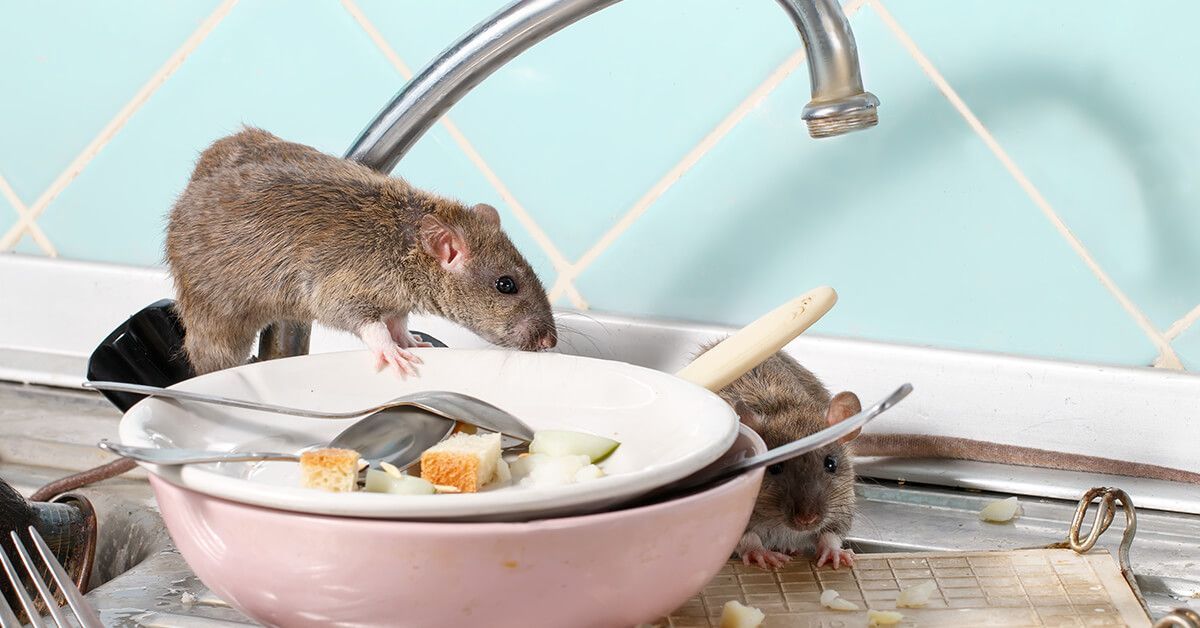Pests may be built for the outdoors, but the inside of our homes often has everything they’re looking for—shelter, food, and water. So how do we protect ourselves from rodents, spiders, cockroaches, and other unwanted pests that are determined to find a way indoors?
It all starts with blocking the ways they come inside. What may be a tiny crack to a 5½’ tall human can be a wide doorway to a ½” bug, so let’s shift our perspective and take a look at entry points as a pest would see them. Once you know how pests are getting in, you can better keep them out.
Some entry points are pretty obvious—a door left ajar or window not closed all the way. But if you’re seeing pests scurrying about indoors and have been diligent about closing doors and windows, there are likely some smaller, less-noticeable openings that pests are using to come inside.
Gaps in baseboards, around chimneys and plumbing voids, and even between bricks and siding can all serve as pest entry points. Even worn-out weather stripping or door sweeps can create enough of a hole to allow pests in.
Keep in mind that to a flying or crawling pest, all openings are attractive. A gap of mere millimeters can provide the same passage to a small insect as a 1″ crack in the foundation.
From a human perspective, bushes grazing a home’s foundation or tree branches overhanging the roof can look artful. To a pest, however, it’s an easily-accessed highway that leads over treated lawns and straight to loose roofing, a cracked window, or other unseen entry point on the top or sides of your house.
“THERE’S VERITABLE BUFFET INSIDE.”
Though there’s often plenty of food for ants to forage outside, in many homes there’s also a large bowl of unguarded pet food sitting on the kitchen floor all day. While a cockroach might have to hunt for water outside, a leaking pipe under the sink is a guaranteed source to sustain them as long as they stick around.
All the messes on our floors, faucet drips, and even improperly packaged food act as pest magnets, and when one pest discovers a food or water source, there are surely more unwelcome intruders to follow.
If you’ve seen an increase in pests in your home, check the weather. Rain, wind, heat, and cold can all encourage pests to seek shelter indoors. Ants are known for coming inside after large rains, and rodents are a notorious winter pest. The time of year can also play a role in increased pest activity, with spring and summer being prime times for new pests to hatch and begin searching for food, water, and shelter—often indoors.
Hosting pests inside your home isn’t what you signed up for. Fortunately, a few preventative steps can help you protect your home from infiltrating insects, arachnids, rodents, and other invasive critters.
- Regularly inspect the perimeter of your home from both the inside and outside. To ensure the most thorough survey of your property, grab a flashlight, ladder, and telescoping mirror to make sure you don’t miss any small cracks or gaps in hidden places. Look up high above your head as well as down on floor level. Don’t forget to inspect storage spaces such as attics, basements, cellars, garages, and sheds.
- Seal the entry points you find so pests can’t get through. Most small gaps and cracks can be repaired using caulk, sealant, or insulation foam purchased from your local home improvement store. Replace damaged weather stripping and door sweeps. Repair window screens that have holes and tighten loose outlet covers.
- Cut back tree limbs and bushes that overhang or touch the sides of your home. A good rule of thumb is to keep plants and branches at least 12-18″ away from the exterior of any building.
- During weather and seasonal changes, read up on the native pests in your area and tailor your defenses accordingly. Preventing wasps in the spring will require a different approach than preparing for a potential rat invasion in the winter.
- Properly store items in your home and keep things clean. Sweeping up crumbs and getting rid of dirty dishes can go a long way in removing temptations for pests. Store food in sealed, airtight containers to deter hungry bugs and rodents from chewing their way in for a bite. Use a trash can with a tight-fitting lid and consider switching cardboard storage boxes for airtight plastic containers to ward off intruding pests.
Seeing our homes from the perspective of the small pests that want to get inside can help determine the most effective ways to keep them out. For a whole-home pest control solution, consult the experts at Local Exterminator. Our trained field experts are adept at identifying potential entry points and knowing which pests are most common in our area—and most importantly, how to stop them. To learn more about our pet- and family-friendly services, contact Moxie today.




